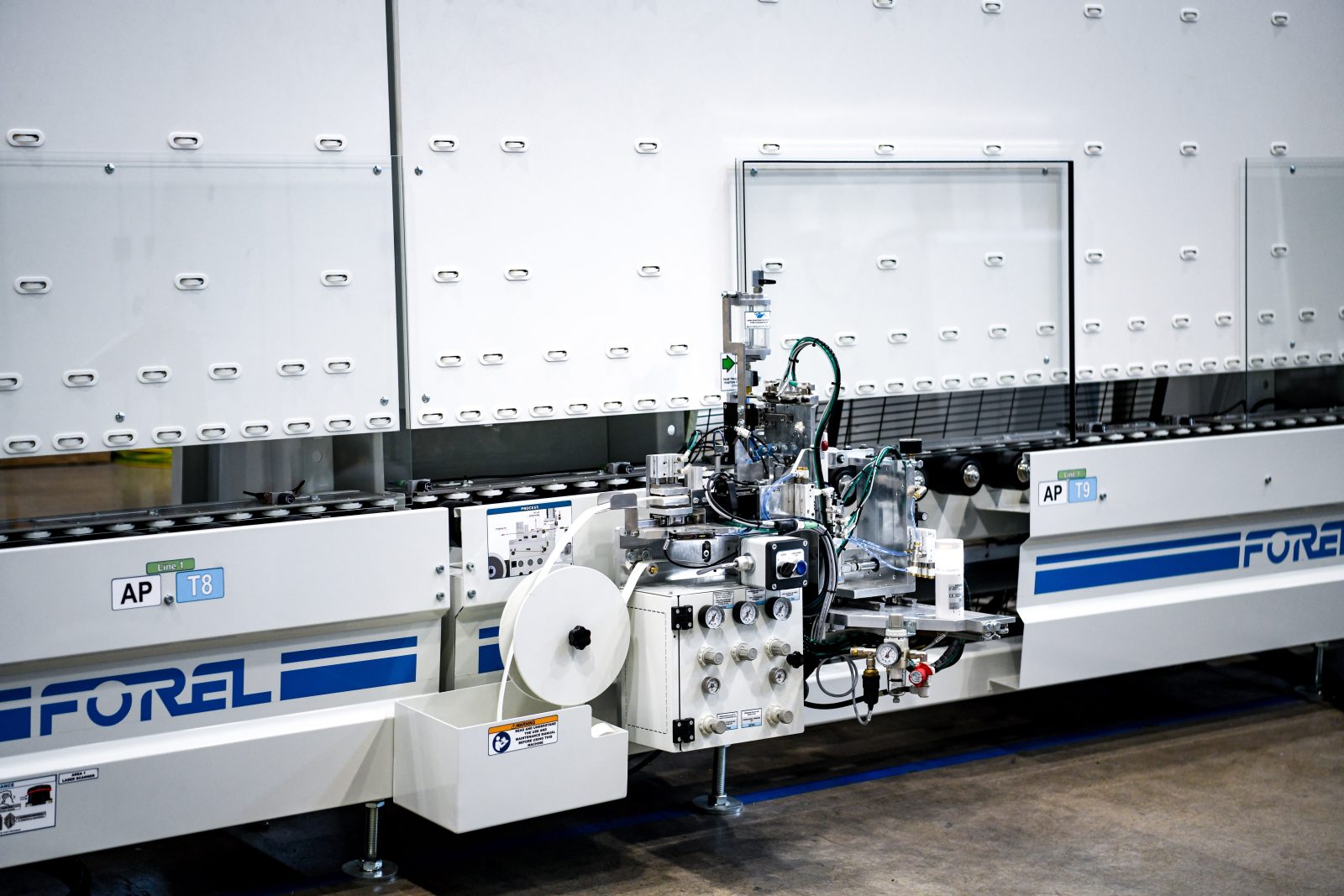The future of UK triple glazing

Brian McDonald, CEO of Forel UK & Ireland, explains how the Forel High Speed Line – which won the G24 Award for machinery innovation – has introduced a ‘skinny triple’ revolution.
Over the past few years an ongoing debate has been rumbling along.
The glazing industry has been asked to do its part and help reduce building envelope U values without radically changing existing window systems.
Unlike mainland Europe, our casement systems are based on a 70mm platform, not larger tilt & turn systems which have better thermal performance designed around TGU’s.
Looking back 18 months, the Triple Glazing Question Part 2 was being announced and the industry eagerly awaited to hear the forthcoming changes to the UK’s fenestration thermal requirements and how they affect all of us.
So, what happened? Nothing really. The status quo firmly remained.
Was it because the systems houses were reluctant to invest millions to produce new systems with wider glazing rebates to incorporate triple glazed units?
Was it because the hardware suppliers were going to have to do a similar thing and introduce new hardware to cope with the extra weight, as there were concerns about existing hardware?
Was it the glass companies who would struggle to manufacture the same volume of units without a major infrastructure change – and could their existing machinery cope?
Would transportation and volume carried be affected and would installers welcome the extra weight?
Maybe it’s a bit of all the above. Or is the simple answer that it was a step to far for the UK market and simply something we are not ready for yet?
A solution emerges
Forel, working with its global partners, has patented and launched a groundbreaking triple glazing manufacturing solution, launched recently at Glassbuild America. The innovation is based on the encapsulation of a thin pane of glass within the unit.
This design allows a triple-glazed unit to be manufactured with a single outer seal, significantly simplifying production without sacrificing performance.
The technology generated great interest, showing this isn’t just another incremental improvement. It’s a potential game-changer.
However, unlike most new technologies, the patented solution is based on Forel’s latest generation of sealed unit lines making it available to existing and new customers
The technology uses flexible spacer bar material and requires only a single secondary seal. The encapsulated pane is set back from the edge of the unit, enabling manufacturers to produce triple-glazed units with the same ease as a standard DGU.
It’s worth noting this technology is also available using thermoplastic material with already one of the industry leaders making this available to the market in mainland Europe.
What happens now?
The arrival of ‘skinny triples’ offers a viable solution to the long-standing question of how to produce TGU’s that are both economically viable and tailored to market needs. By simplifying the production process, reducing weight, and eliminating the need for major equipment upgrades at all levels, the skinny triple will make triple glazing a realistic option for more manufacturers, installers, and homeowners.
For the IGU manufacturer, it offers a solution to futureproof both their manufacturing technology and investment without major cost or upheaval.
We’re now starting to roll out this technology worldwide, with the first lines being installed in the States. Conversations are happening with glass float suppliers whilst organisations are being lobbied to encourage the adaptation of this technology.
The market need for triple glazing isn’t just a selling opportunity. It is a response to the rising demands to lower our carbon footprint becoming more environmentally conscious, whilst allowing the industry to adapt to a change it can manage.
The technology is here, its proven, it works and there is no doubt that the market demands and needs and wants it. TGUs for our market are no longer wishful thinking – they’re real – and have been recognised by the UK industry with Forel winning the G24 machinery innovation award.
